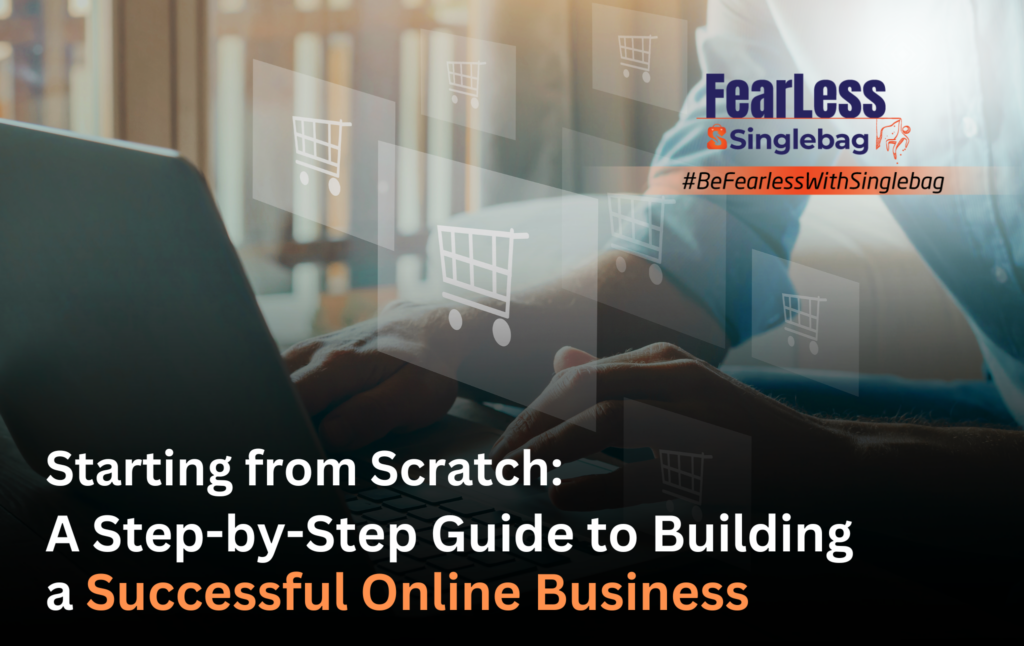
5 Steps Guide: How to Become a Freelancer?

In today’s rapidly evolving job market, many individuals are opting for the freedom and flexibility offered by freelancing. Become a Freelancer and successful requires careful planning and execution.
In this comprehensive guide, we will explore five essential steps to help you embark on your freelance journey and thrive in the competitive gig economy. From establishing a solid foundation to managing projects and maintaining a healthy work-life balance, we will cover everything you need to know to kickstart your freelance career. So, let’s dive in!
Step 1: Lay the Groundwork for Your Freelance Career
- 1.1 Identify Your Skills and Passion:
Before venturing into freelancing, it’s crucial to identify your skills and areas of expertise. Determine what you’re passionate about and what services you can offer to potential clients.
- 1.2 Research the Freelance Market:
Explore the freelance job market to understand the demand for your skills. Study industry trends, competition, and rates to position yourself effectively.
- 1.3 Define Your Target Audience:
Identify your target audience and create a niche for yourself. Tailor your services to cater to specific client needs and establish your unique value proposition.
Step 2: Set Up Your Freelance Business
- 2.1 Create a Professional Brand:
Develop a professional brand identity, including a compelling logo, website, and social media profiles. Build an online presence that reflects your expertise and showcases your portfolio.
- 2.2 Build a Portfolio:
Compile a portfolio showcasing your best work. Include a variety of samples that demonstrate your skills and expertise in different areas. Consider using platforms like Behance or Dribbble to showcase your work.
- 2.3 Determine Your Pricing Structure:
Establish a pricing structure that aligns with your skills and experience. Research industry standards and consider factors such as project complexity, time commitment, and market demand.
Step 3: Find Freelance Opportunities
- 3.1 Utilize Freelance Platforms:
Explore popular freelancing platforms such as Upwork, Freelancer, and Fiverr to find potential clients and projects. Create compelling profiles that highlight your skills, experience, and portfolio.
- 3.2 Network and Collaborate:
Leverage your existing network and build new connections. Attend industry events, join professional communities, and engage in online forums to expand your network and uncover new opportunities.
- 3.3 Pitch Your Services:
Proactively reach out to potential clients and businesses that align with your target audience. Craft personalized pitches that demonstrate your understanding of their needs and how you can provide value.
Step 4: Manage Freelance Projects Efficiently
- 4.1 Establish Clear Communication:
Maintain open and transparent communication with clients. Set expectations from the outset, define project scope, and discuss timelines and deliverables.
- 4.2 Use Project Management Tools:
Leverage project management tools like Trello, Asana, or Monday.com to streamline your workflow, track tasks, and collaborate effectively with clients and team members.
4.3 Create Contracts and Agreements:
Protect your interests by using clear and concise contracts or service agreements. Define project scope, payment terms, intellectual property rights, and dispute resolution mechanisms.
Step 5: Maintain Work-Life Balance and Thrive as a Freelancer
- 5.1 Set Boundaries:
Establish clear boundaries between work and personal life. Define dedicated work hours, create a productive workspace, and prioritize self-care to prevent burnout.
- 5.2 Nurture Client Relationships:
Cultivate strong client relationships by delivering high-quality work, providing excellent customer service, and maintaining regular communication. Happy clients are more likely to refer you to others.
- 5.3 Continuously Learn and Evolve:
Stay updated with industry trends, technology advancements, and emerging skills. Invest in professional development through online courses
Singlebag Partner Program
Singlebag is an e-commerce platform where you create an online store for merchants. You don’t need any coding knowledge to develop a website here. As a partner, you’ll onboard clients to Singlebag, and for referring clients, singlebag pay you 25% recurring revenue according to the plan you make your clients subscribe to. Join the Singlebag Partner Program and earn a 25% revenue share.
Conclusion
To become a successful freelancer, start by identifying your skills and target audience. Establish a professional brand and create a portfolio that showcases your work. Find freelance opportunities by leveraging platforms and networking with others in your industry.
Once you secure projects, manage them efficiently by communicating clearly with clients and using contracts when necessary. It’s crucial to maintain a healthy work-life balance and continue learning to stay ahead in the ever-changing freelance landscape. By following these steps, you can thrive as a freelancer and build a successful career.






Responses